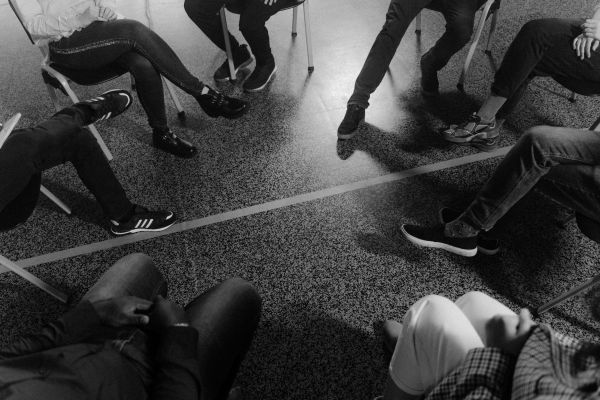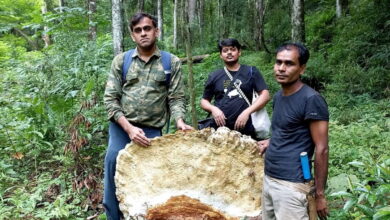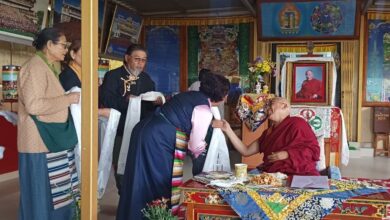Protect the lifelines of youth & community-led HIV programmes
In the lead-up to International Youth Day, around 150 youths with HIV came together from across India at National Youth Conclave 3.0

Shobha Shukla & Bobby Ramakant/CNS
Youth-led, rights-based and gender transformative HIV response is key. “Community-led programmes are lifelines of the HIV response, reaching those most in need. As international aid shrinks, these lifelines are the first to disappear. We must protect them,” said UNAIDS.
One such lifeline is youth-led programmes for HIV prevention and treatment.
The latest AIDS data released in July 2025 shows that the numbers of those newly diagnosed with HIV and those who died of AIDS-related illnesses in 2024 have declined compared to 2010 levels. But there is hardly any change between 2023 and 2024 data for new HIV infections and AIDS-related illnesses, which is worrying. Young people, particularly adolescents, continue to face unique challenges in accessing HIV prevention and treatment services.
Together for change: Youth, Unity and Impact
Youth voices unequivocally called for a rights-based, youth-friendly and gender transformative HIV, health and social welfare responses where no one is left behind.
In the lead-up to International Youth Day on August 12, around 150 young people living with HIV and in all gender diversities, came together from across India at National Youth Conclave 3.0 organised by Youth Lead Voices, National AIDS Control Organisation (NACO) of Ministry of Health and Family Welfare, Government of India, and National Coalition of People Living with HIV in India (NCPI Plus), along with partners including UNICEF, Plan India, Meeting Targets and Maintaining Epidemic Control (EpiC), among others.
Young leaders shared their journeys on HIV prevention, early testing, mental health and HIV treatment adherence — reminding us that every story deserves to be heard. Unless we listen to the voices of youth, how will we unlearn, learn, and better understand the issues they face?
More importantly, unless we listen without judgement or stereotype, how will we engage the young in finding effective solutions to the problems?
Dr Chinmoyee Das, a senior official from the Government of India’s National AIDS Control Organisation, patiently and sensitively listened to the voices of the young – and responded to every issue they had collectively raised. A bold and visionary conversation between youth and key policymakers at National Youth Conclave 3.0 focused on building safer, healthier and more inclusive futures.
Making a difference
Youth Lead Voices connects over 1,860 young people living with HIV across India. All of them (100%) have undetectable viral load since last one year, confirms Pooja Mishra, National Coordinator of Youth Lead Voices (YLV) and General Secretary of National Coalition of People Living with HIV in India (NCPI Plus).
Undetectable viral load means that the person lives healthy, and according to the WHO, there is zero risk of any further HIV transmission – so treatment works as prevention too.
“We have to maintain viral load undetected status for all of them while we expand our network and impact,” said Pooja Mishra.
Young people are essential partners in designing, implementing and monitoring effective solutions to health and social challenges they face – with support from the government and all other stakeholders.
“We need to explore new entry points for reaching the at-risk youth community for offering voluntary HIV counselling and testing. We also need to strengthen youth-friendly screening strategies among youth, including community-based screening for HIV. We should continue providing peer-support and active engagement with them to maintain optimal treatment adherence among young people living with HIV,” added Mishra.
Seek help with rights, it could be available
According to Das, the government would consider all input from the young people for the drafting of the next phase of the national AIDS control programme (NACP-6). “But we can address a lot of issues without having to wait for NACP-6, right now.”
She emphasised better utilisation of the Government of India’s tollfree helpline 1097 phone-in number, which provides information on HIV as well as sexually transmitted infections in several Indian languages, nationwide.
A youth shared his user experience of 1097: he preferred to speak in Bengali but after 3 unsuccessful attempts, gave up. Dr Chinmoyee promised to take this feedback to appropriate review meetings.
Dr Asha Hegde shared a positive example from Churachandpur, Manipur, where there is a safe space co-created with local partners for young people.
“We have built the agency of the younger population,” she said while complementing Youth Voices Lead too – which resonates with the spirit driving the safe space project in Churachandpur.
“Now we are slowly providing and offering services for HIV voluntary counselling and testing, refills of lifesaving antiretroviral therapy, opioid substitution therapy or harm reduction services, among others,” she added.
The latest UNAIDS 2025 data shows that key populations have higher HIV risk. Four of every five (79%) new infections in Asia-Pacific region were among key populations and their partners. Criminalisation and marginalisation deepen their vulnerability, making it harder to reach them with services.
(Shobha Shukla and Bobby Ramakant co-lead the editorial at Citizen News Service and are on the governing board of award-winning Global Antimicrobial Resistance Media Alliance and Asia Pacific Media Alliance for Health and Development)




